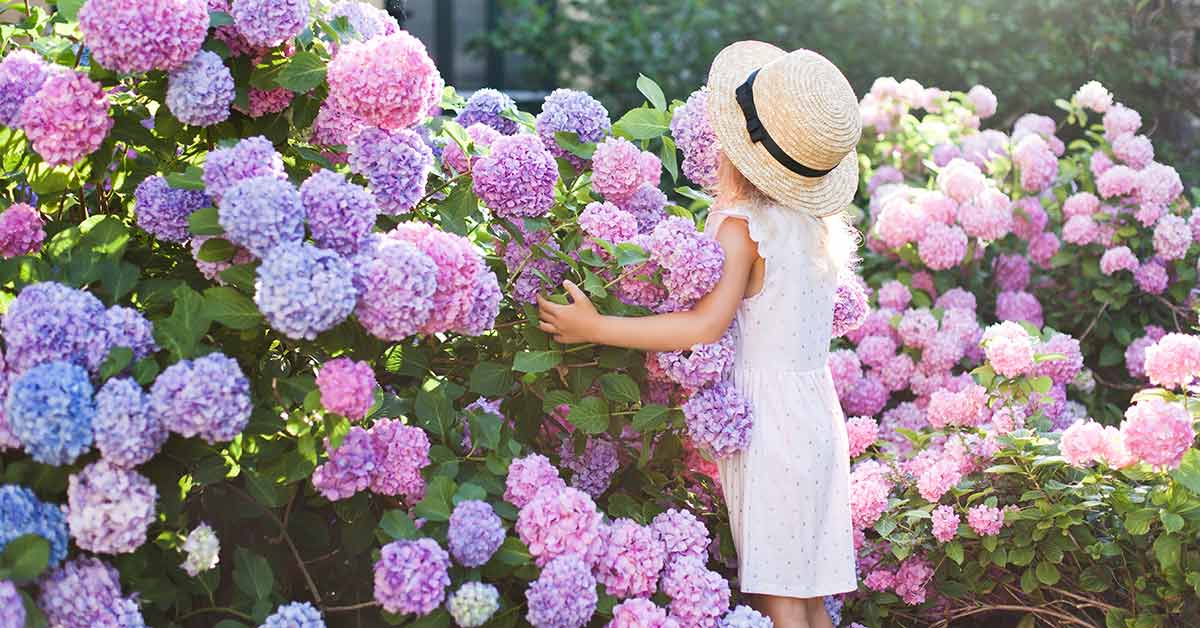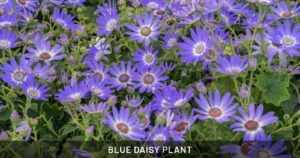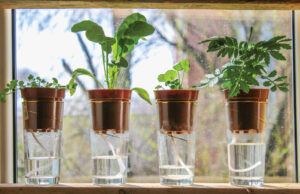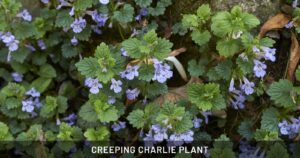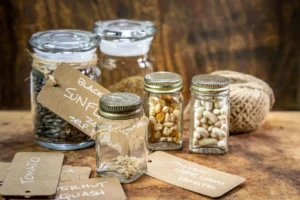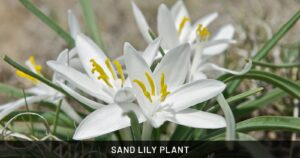How to Grow and Care for Hydrangeas: A Complete Guide
With their magnificent blooms and lush foliage, hydrangeas are among America’s most beloved flowering shrubs. Whether you’re looking to create a stunning focal point in your garden or add beautiful cut flowers to your home, hydrangeas offer versatility and charm that few other plants can match. This comprehensive guide will walk you through everything you need to know about growing and caring for these spectacular shrubs in your own landscape.
Understanding Hydrangea Varieties
Before diving into care techniques, it’s important to understand the different types of hydrangeas commonly grown in the United States.
Popular Hydrangea Species for American Gardens
Bigleaf Hydrangeas (Hydrangea macrophylla) are perhaps the most recognizable, featuring large mophead or lacecap flowers that can change color based on soil pH. In acidic soils, they produce blue flowers, while alkaline soils yield pink blooms.
Smooth Hydrangeas (Hydrangea arborescens) include popular cultivars like ‘Annabelle’ with their impressive white flower heads. These native American plants offer excellent cold hardiness.
Panicle Hydrangeas (Hydrangea paniculata) produce cone-shaped flower clusters that often start white and develop pink or red tones as they age. ‘Limelight’ and ‘PeeGee’ are beloved varieties in this category.
Oakleaf Hydrangeas (Hydrangea quercifolia), another American native, feature distinctive lobed leaves resembling oak tree foliage and produce elegant white panicles that age to pink.
Mountain Hydrangeas (Hydrangea serrata) are similar to bigleaf types but generally more compact and cold-hardy, making them suitable for northern gardens.
Planting Your Hydrangeas for Success
Successful hydrangea growth begins with proper planting techniques.
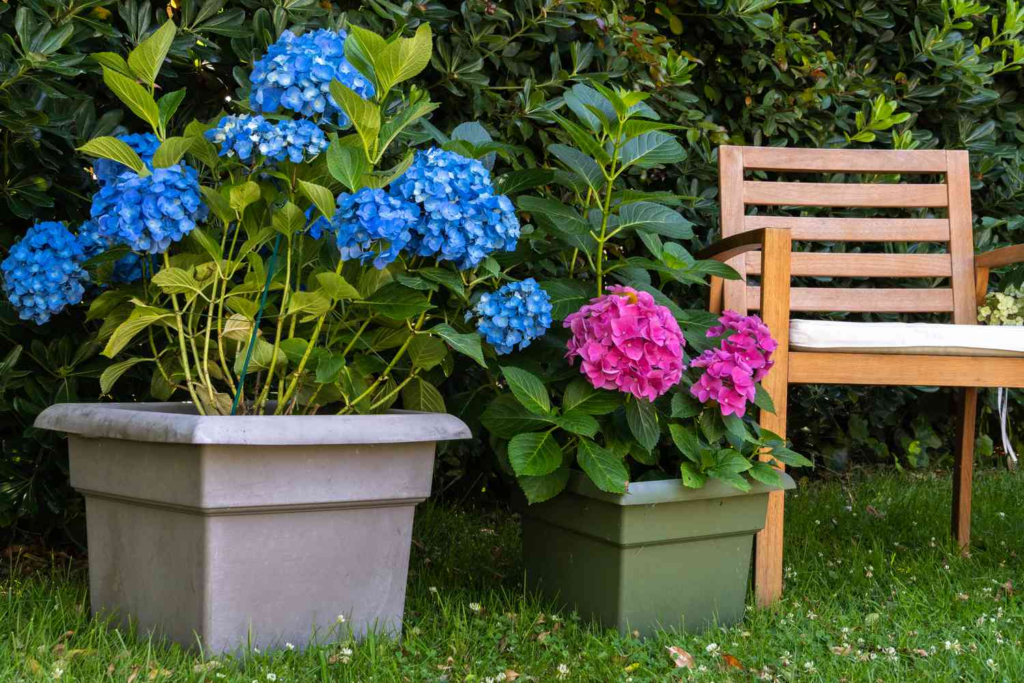
When and Where to Plant
The best time to plant hydrangeas is in spring or fall when temperatures are moderate and rainfall is typically more abundant. This gives your plants time to establish their root systems before facing summer heat or winter cold.
Most hydrangeas thrive in locations that receive:
- Morning sun and afternoon shade in warmer climates
- More sun in northern regions (up to 6 hours daily)
- Protection from harsh winds
- Well-draining soil rich in organic matter
According to the USDA Natural Resources Conservation Service, hydrangeas generally perform best in soils with a pH between 5.5 and 6.5, though this varies by species. You can find more information about optimal soil conditions for flowering shrubs at https://plants.usda.gov/home.
Planting Process
- Dig a hole twice as wide as your plant’s root ball but only as deep.
- Remove your hydrangea from its container, gently loosening the roots.
- Place it in the hole so the top of the root ball is level with or slightly above the surrounding soil.
- Backfill with soil mixed with compost, firming gently around the roots.
- Water thoroughly after planting to eliminate air pockets.
- Apply 2-3 inches of mulch, keeping it away from the stems to prevent rot.
Essential Hydrangea Care
Watering Requirements
Hydrangeas have moderate to high water needs, especially during their establishment period and flowering season. Consistent moisture is crucial for healthy growth and abundant blooms.
Newly planted hydrangeas require frequent watering to develop strong root systems. Once established, you can reduce watering frequency but should still ensure they receive approximately 1 inch of water per week from rainfall or irrigation.
Use the table below as a reference for watering your hydrangeas throughout the growing season:
Hydrangea Watering Guide
The key to proper hydrangea watering is consistency. These plants prefer deep, thorough watering rather than frequent light sprinklings. Always water at the base of the plant to keep foliage dry and reduce disease risk.
Fertilization Schedule
Hydrangeas benefit from regular fertilization to support their vigorous growth and prolific flowering. Here’s a simple fertilization timeline to follow:
Early Spring: Apply a balanced, slow-release fertilizer (10-10-10) when new growth appears.
Late Spring: For reblooming varieties, apply a second light feeding after the first flush of flowers.
July: This is the cutoff point for fertilizing in most regions. Later applications can stimulate new growth that won’t harden off before winter.
For organic gardeners, compost, aged manure, and coffee grounds make excellent amendments for hydrangeas. Spread a 1-2 inch layer around your plants in spring, keeping it away from the stems.
Pruning Techniques
Proper pruning is essential for hydrangea health and bloom production, but the timing varies dramatically by species:
Bigleaf and Mountain Hydrangeas (H. macrophylla and H. serrata):
- Prune immediately after flowers fade
- Remove only dead or weak stems
- Avoid fall or spring pruning as you’ll remove flower buds
Panicle and Smooth Hydrangeas (H. paniculata and H. arborescens):
- Prune in late winter or early spring
- Can be cut back hard (to 1-2 feet) if desired for stronger stems
- Will bloom on new wood regardless of pruning severity
Oakleaf Hydrangeas (H. quercifolia):
- Require minimal pruning
- Remove dead wood in early spring
- Prune to shape after flowering if needed
A common mistake is applying the same pruning approach to all hydrangeas. Remember that improper pruning timing is the leading cause of failure to bloom.
Manipulating Hydrangea Flower Colors
One of the most fascinating aspects of bigleaf hydrangeas is the ability to change their flower color by altering soil chemistry.
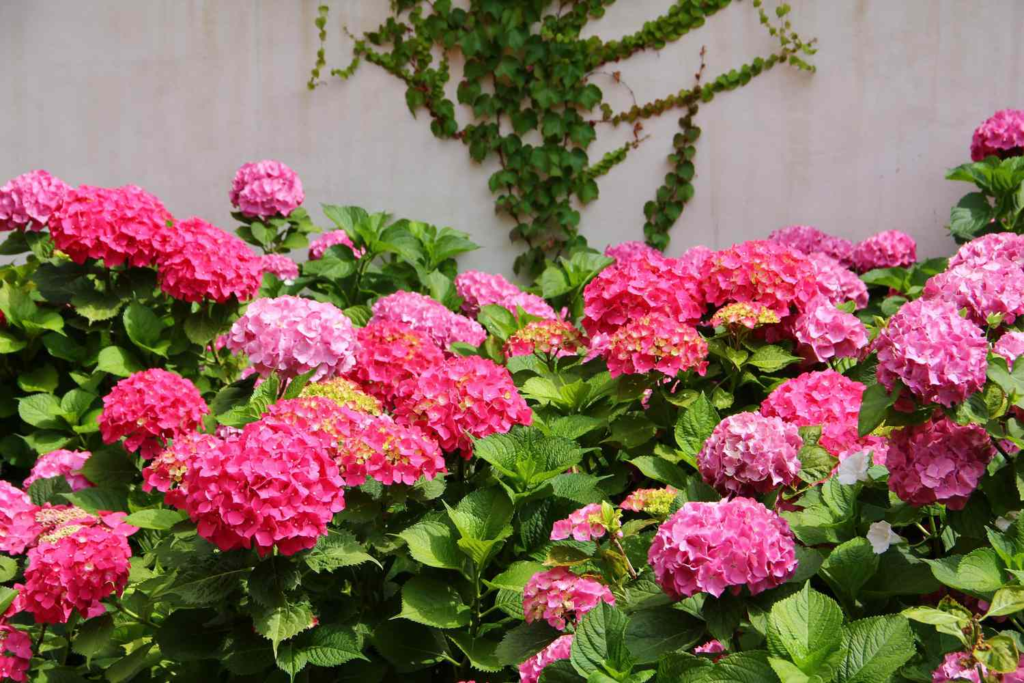
Blue to Pink and Vice Versa
For bigleaf hydrangeas (H. macrophylla) and some mountain hydrangeas (H. serrata), flower color is determined by the availability of aluminum in the soil:
For Blue Flowers:
- Aim for soil pH of 5.2-5.5
- Add aluminum sulfate to the soil following package directions
- Apply coffee grounds, pine needles, or peat moss as mulch
For Pink Flowers:
- Target soil pH above 6.0
- Add garden lime to raise pH
- Use wood ash as a soil amendment
For Purple Flowers:
- Maintain soil pH around 5.5-6.0 for this intermediate color
Note that white-flowering hydrangeas will remain white regardless of soil pH, and certain cultivars have been bred to maintain their color regardless of soil conditions. The color-changing effect is most pronounced in the original bigleaf varieties.
Seasonal Hydrangea Care
Spring Tasks
As temperatures warm and new growth emerges:
- Remove winter protection if used
- Apply fresh mulch around plants
- Fertilize according to the schedule above
- Inspect for winter damage and prune as needed for your specific variety
- Divide smooth hydrangeas if desired
Summer Maintenance
During the growing season:
- Monitor water needs closely, especially during hot periods
- Deadhead spent blooms if desired (except those you wish to dry)
- Watch for pests like aphids and treat promptly
- Prop up heavy flower heads with supports if needed
Fall Preparation
As growth slows:
- Stop fertilizing
- Continue watering until the ground freezes
- Leave dead blooms for winter interest and protection
- Apply a thick layer of mulch after the first frost
Winter Protection
In colder regions (USDA zones 4-5):
- Create protection for bigleaf types by surrounding plants with chicken wire filled with dry leaves
- Apply 4-6 inches of mulch at the base
- Consider anti-desiccant sprays for exposed plants
- Avoid salt exposure from winter road treatments
Troubleshooting Common Hydrangea Problems
| Growth Stage | Watering Frequency | Amount | Special Considerations |
|---|---|---|---|
| Newly planted | Daily for first week | 1-2 gallons | Monitor closely; don’t let soil dry out |
| Establishing (first season) | 2-3 times per week | 1-2 gallons | Increase during hot or dry periods |
| Established plants | 1-2 times per week | 1-2 gallons | Adjust based on rainfall, temperature |
| Summer heat | 3-4 times per week | 2-3 gallons | Water deeply in early morning |
| Fall/Spring | As needed | 1 gallon | Water when top 2 inches of soil feels dry |
| Winter | Monthly in warm regions | Minimal | Only during extended dry periods |
| Container plants | Every 1-2 days in summer | Until water drains from bottom | Check soil moisture daily |
Why Aren’t My Hydrangeas Blooming?
The most common hydrangea complaint is lack of flowers. Here are the typical culprits:
- Improper pruning: Cutting bigleaf or oakleaf hydrangeas at the wrong time removes flower buds.
- Late frosts: Spring freezes can damage developing buds on early-leafing varieties.
- Too much shade: Insufficient light leads to fewer flowers.
- Excessive nitrogen: Too much nitrogen fertilizer promotes foliage at the expense of blooms.
- Young plants: Some hydrangeas need 2-3 years to mature before flowering reliably.
Pest and Disease Management
While relatively trouble-free, hydrangeas can experience these common issues:
Powdery Mildew: This fungal disease appears as a white coating on leaves. Improve air circulation and avoid overhead watering.
Leaf Spot: Brown spots with purple halos indicate fungal infection. Remove affected leaves and apply fungicide if severe.
Aphids: These tiny insects cluster on new growth and flower buds. Blast them with water or use insecticidal soap.
Spider Mites: Look for fine webbing and stippled leaves during hot, dry weather. Increase humidity and treat with horticultural oil if needed.
The Environmental Protection Agency (EPA) recommends integrated pest management approaches for garden plants, focusing on cultural practices that prevent problems before turning to chemical controls. For more information, visit the EPA’s gardening resources at https://www.epa.gov/safepestcontrol/managing-pests-around-your-home.
Using Hydrangeas in Your Landscape
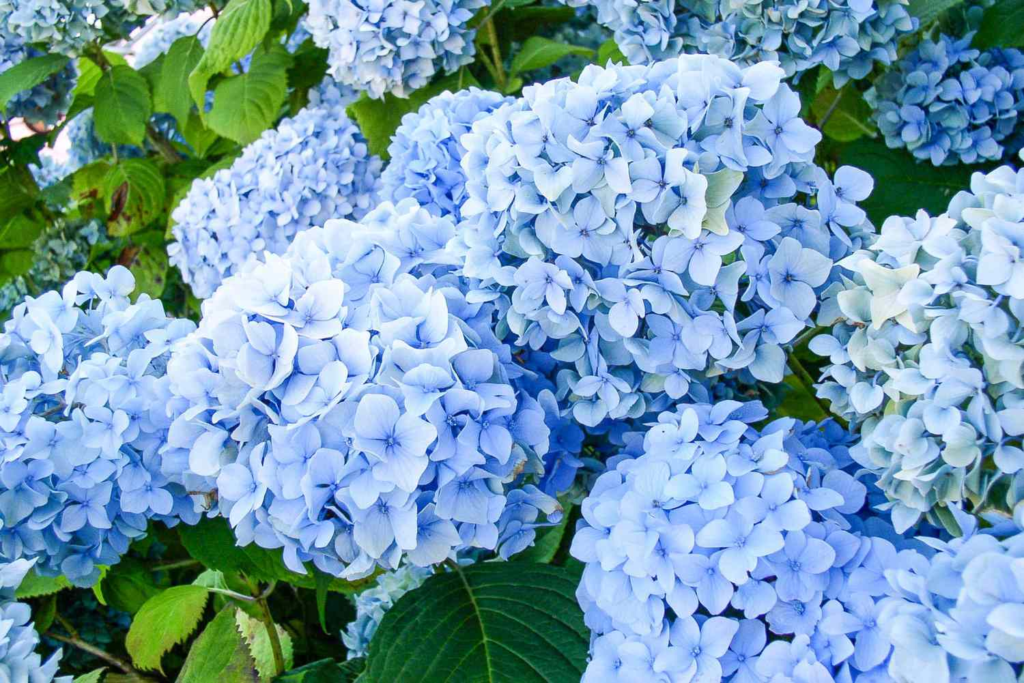
Design Ideas
Hydrangeas are incredibly versatile in the landscape:
- Plant them as specimen shrubs where their magnificent blooms can shine
- Create a flowering hedge for privacy and color
- Use compact varieties in mixed perennial borders
- Pair with hostas, ferns, and astilbe in woodland settings
- Grow climbing hydrangeas (H. anomala petiolaris) on trees, walls or fences
Container Growing
Many hydrangeas, especially newer compact cultivars, perform beautifully in containers:
- Choose a pot at least 18-24 inches in diameter
- Use high-quality potting mix with good water retention
- Place pots where they’ll receive morning sun but afternoon shade
- Water more frequently than in-ground plants
- Provide winter protection in cold regions by moving containers to an unheated garage
Cutting and Preserving Hydrangea Blooms
Fresh Cut Flowers
To enjoy hydrangeas as cut flowers:
- Cut stems in the morning when temperatures are cool
- Choose blooms that are fully open but not past their prime
- Remove leaves that would sit below the waterline
- Dip stem ends in alum powder or quickly singe them with a flame to prevent sap from clogging stems
- Place in deep water and allow to hydrate for several hours before arranging
Drying Methods
Hydrangeas dry beautifully for long-lasting arrangements:
- Cut mature blooms when they feel slightly papery
- Remove most leaves
- Hang upside down in a dark, dry location for 2-3 weeks
- For quicker results, place stems in a vase with 1-2 inches of water and allow water to evaporate naturally
- Spray with hairspray to reduce shattering once dry
Conclusion
With their show-stopping blooms and adaptability to various garden settings, hydrangeas reward gardeners with relatively little maintenance. By understanding your specific variety’s needs and following the care guidelines outlined above, you’ll enjoy these magnificent shrubs for many years.
Whether you’re growing classic bigleaf varieties, native oakleaf types, or elegant panicle hydrangeas, these versatile shrubs offer unmatched beauty and presence in American gardens. From foundation plantings to cut flower gardens, hydrangeas deserve their place as one of our nation’s favorite flowering shrubs.
